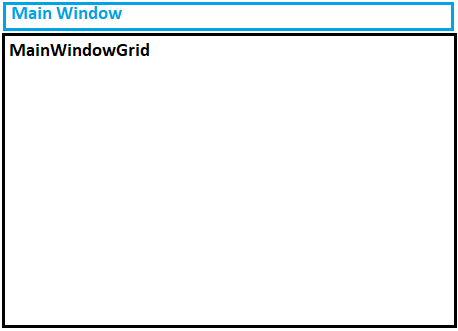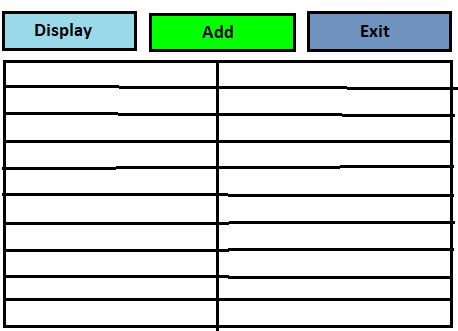I made a simple demo to implement what you want.
The code for MainWindox.xaml
<Window.DataContext>
<local:ViewModel/>
</Window.DataContext>
<Grid Name="grid" >
<local:MyUC DataContext="{Binding CurrentVM,UpdateSourceTrigger=PropertyChanged,Mode=TwoWay}" />
</Grid>
MyUC is a UserControl and its xaml code is:
<UserControl.Resources>
<DataTemplate DataType="{x:Type local:MyViewModel1}" >
<local:UserControl1 DataContext="{Binding}" Visibility="{Binding visibility}"/>
</DataTemplate>
<DataTemplate DataType="{x:Type local:MyViewModel2}">
<local:UserControl2 DataContext="{Binding}" Visibility="{Binding visibility}" />
</DataTemplate>
</UserControl.Resources>
<ContentControl Content="{Binding}" />
UserControl1.xaml code with adding Visibility="{Binding visibility}" for UserControl1
<StackPanel>
<Label Content="1. UserControl"></Label>
<Button Content="Add" Width="120" Height="38" Click="Button_Click1" ></Button>
</StackPanel>
Its cs code is:
private void Button_Click1(object sender, RoutedEventArgs e)
{
MyViewModel1 model1 = new MyViewModel1();
MyViewModel2 model2 = new MyViewModel2();
model2.IsShown = true;
model2.visibility = Visibility.Visible;
model1.IsShown = false;
model1.visibility = Visibility.Hidden;
ViewModel viewModel = new ViewModel();
viewModel.DataLoad(model1, model2);
MainWindow mainWindow = (MainWindow)Application.Current.MainWindow;
mainWindow.DataContext = viewModel;
}
UserControl2.xaml code with adding Visibility="{Binding visibility}" for UserControl2
<StackPanel>
<Label Content="2. UserControl"></Label>
<Button Content="Show" Width="120" Height="38" Click="Button_Click2" ></Button>
</StackPanel>
Its cs code is:
private void Button_Click2(object sender, RoutedEventArgs e)
{
MyViewModel1 model1 = new MyViewModel1();
MyViewModel2 model2 = new MyViewModel2();
model2.IsShown = false;
model2.visibility = Visibility.Hidden;
model1.IsShown = true;
model1.visibility = Visibility.Visible;
ViewModel viewModel = new ViewModel();
viewModel.DataLoad(model1, model2);
MainWindow mainWindow = (MainWindow)Application.Current.MainWindow;
mainWindow.DataContext = viewModel;
}
Code for C#:
public class ViewModel : NotifyObject
{
private object currentVM;
public object CurrentVM
{
get
{
return currentVM;
}
set
{
currentVM = value;
OnPropertyChanged("CurrentVM");
}
}
MyViewModel1 myView1 = new MyViewModel1();
MyViewModel2 myView2 = new MyViewModel2();
public ViewModel()
{
currentVM = DataLoad(myView1, myView2);
}
public object DataLoad(MyViewModel1 _myView1, MyViewModel2 _myView2)
{
if (_myView1.IsShown == true && _myView1.visibility == Visibility.Visible) { currentVM = _myView1; }
if (_myView2.IsShown == true && _myView2.visibility == Visibility.Visible) { currentVM = _myView2; }
OnPropertyChanged("CurrentVM");
return currentVM;
}
}
public class MyViewModel1 : NotifyObject
{
public MyViewModel1()
{
IsShown = true;
visibility = Visibility.Visible;
}
private Visibility _visibility;
public Visibility visibility
{
get
{
return _visibility;
}
set
{
_visibility = value;
OnPropertyChanged("visibility");
}
}
private bool isShown = true;
public bool IsShown
{
get
{
return isShown;
}
set
{
isShown = value;
OnPropertyChanged("IsShown");
}
}
public string Info1 { get; set; }
}
public class MyViewModel2 : NotifyObject
{
public MyViewModel2()
{
IsShown = false;
visibility = Visibility.Hidden;
}
private bool isShown;
public bool IsShown
{
get
{
return isShown;
}
set
{
isShown = value;
OnPropertyChanged("IsShown");
}
}
private Visibility _visibility;
public Visibility visibility
{
get
{
return _visibility;
}
set
{
_visibility = value;
OnPropertyChanged("visibility");
}
}
}
public class NotifyObject : INotifyPropertyChanged
{
public event PropertyChangedEventHandler PropertyChanged;
protected void OnPropertyChanged(string propertyName)
{
if (PropertyChanged != null)
{
PropertyChanged(this, new PropertyChangedEventArgs(propertyName));
}
}
}
The result is:

If the response is helpful, please click "Accept Answer" and upvote it.
Note: Please follow the steps in our documentation to enable e-mail notifications if you want to receive the related email notification for this thread.




